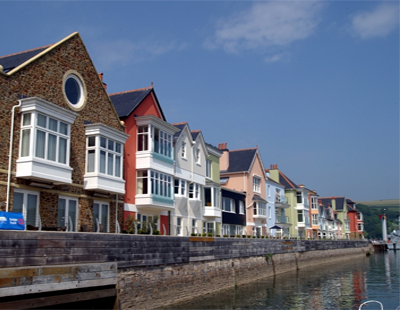A new report from estate agents Strutt & Parker has examined how policy and political events have transformed the property market over the past five years.
Since 2013, the Housing Futures survey - with 2,000 respondents - has been conducted annually to try to understand the aspirations of buyers and renters across the UK, as well as the challenges they face. Now the latest report, ‘Housing Futures: New Horizons’, has summarised what the last five years have meant for the UK property market.
“Five years have passed since we first did the Housing Futures survey, so the time was ripe for us to look back over previous results to see whether some of our predictions have come true – such as the rise of single person households and those living in rental accommodation,” Vanessa Hale, director of research at Strutt & Parker, commented.
“It was encouraging to discover that many of the creeping trends we identified half a decade ago had become a reality. Over the five-year period, our survey showed a small increase in those who anticipated living on their own, a tribe we call ‘The Onesies’. Likewise, we uncovered a jump in the number of people seeking rental accommodation.”
The key findings from five years of Housing Futures research were the growing importance of broadband, with the majority of home movers now seeing it as essential (up to 57% from 48%), and the rise in popularity of big cities as a place to live, with 15% stating it as their preferred location in comparison to 9% in 2013.
The research also revealed that rental increased as a future tenure from 10% to 13%, reflecting the sector’s growing popularity in recent years, while one of the key reasons to move home is now providing financial support for relatives (up from 15% to 22%). Meanwhile, those that anticipate living in a single household rose from 8% to 11%.
The five years of survey results highlighted that a desire for a more relaxed, accessible lifestyle rests behind the most popular reasons for moving home, with local shops and amenities, digital connectivity and public transport among the top reasons for moving, along with a hankering for greater privacy (66%).
People are now more concerned about access to public transport than they were in 2013, up from 37% to 48%, while more people now want to be closer to family and friends despite the increasing digitalisation of society (also up from 37% to 48%).
In addition, walking to work is now seen as an increasingly attractive option, up from 25% to 36%.
“Connectivity seems to be the key for British home movers in 2018,” Hale said. “We want to be connected in all areas of our lives – digitally through our mobiles and laptops and physically to good transport links and local shops and leisure facilities. There is a growing requirement for connection, community and convenience.”
She added: “Since 2013, good broadband has jumped from 48% to 57% as a key motivation for moving. It is now seen as a necessity for many as it impacts on every area of our life – whether that be work or leisure – if we don't have it at our fingertips. This move towards connection also goes some way to explain why our survey shows that big city life has become more appealing to people.”
By their very nature, she said, cities tend to offer a greater level of accessibility than smaller towns or villages. “City dwellers don’t have long commutes to work and can enjoy walking to a local cafe or the gym,” Hale continued. “In today’s hectic times, this is the lifestyle many people want.”
The preference for city living might also help to explain why detached houses have seen a drastic dip in popularity over the past five years (down from 83% to 49%), while semi-detached homes have taken on the mantle as the most desired housing option for an increasing number of respondents (up from 5% to 14%).
“Three bedrooms remain the most popular housing option with 35% choosing them, while there has been a decline in the aspiration to live in larger properties with four or more bedrooms (down from 37% to 27%),” Hale said. “This could reflect the change in many household make-ups – a couple with no children remains the most likely future household make-up at 44%, although this option had declined by 14% in the past five years.”
The second half of the ‘Housing Futures: New Horizons’ publication looks ahead to the future and focuses on new and innovative technology which is set to transform the property market over the next decade, including blockchain, holoportation and communicating smart homes.
To download a copy of the full report, you can visit https://www.struttandparker.com/knowledge-and-research/new-horizons-2018








.png)









Join the conversation
Be the first to comment (please use the comment box below)
Please login to comment